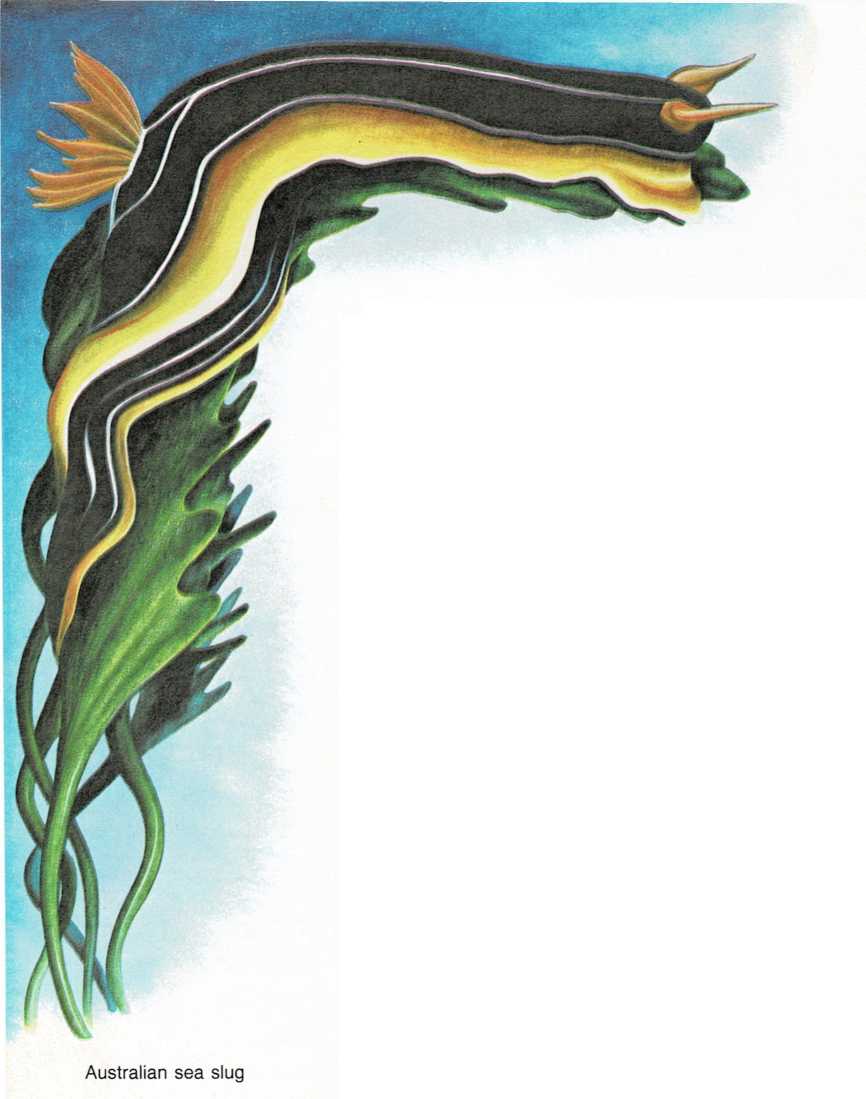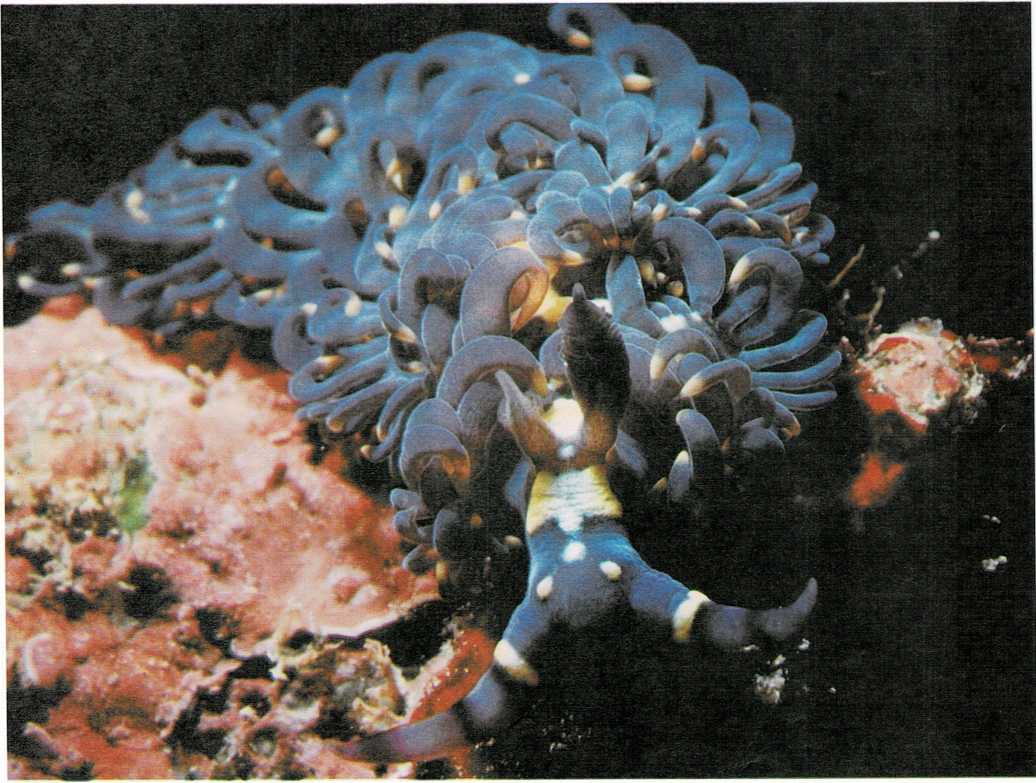
Sea slugs
If you have ever played in a garden or meadow, you’ve probably seen
slugs. A slug is a snail without a shell. It’s a little brownish-yellow
lump that crawls very slowly. Usually it has two \”feelers” sticking out
of its head. It’s not a very pretty creature, at all.
But the slugs that live in the sea wear finery that puts their land
cousins to shame. Most sea slugs are beautifully colored, and are often
decorated with gay spots and stripes.
The batwing sea slug is a lovely pale orange. The Mexican ruffled sea
slug is lime green with black and gold ruffles on its back. And the
clown sea slug makes you think of a circus clown in a milk-white costume
with red frills and polka-dots!
Most kinds of sea slugs live in shallow water, where they crawl about on
the sea bottom. But some can swim by gracefully wiggling their bodies.
Some sea slugs eat seaweed. Others eat sponges [(spuhn]{.smallcaps}
jehs), or coral polyps [(kawr]{.smallcaps} uhl [pahl]{.smallcaps} ihps),
or sea anemones (uh [nehm]{.smallcaps} uh neez). And some eat fish eggs.
Sea slugs are such soft, helpless-seeming creatures you might think that
other sea animals could feast on them easily. Actually,
few animals try to eat sea slugs. If a sea slug is touched, a thick,
slimy liquid usually oozes out of its body. And in some sea slugs, this
liquid is poisonous.
Some sea slugs protect themselves with \”borrowed” poison. These slugs
eat the tentacles of sea anemones, which are full of stinging cells. The
poison doesn’t bother the slugs—they just store the stinging cells in
their own bodies. Then, if any creature tries to bite them, it gets
stung!
Hawaiian sea slug


